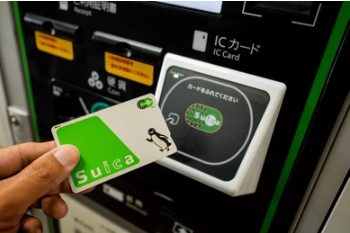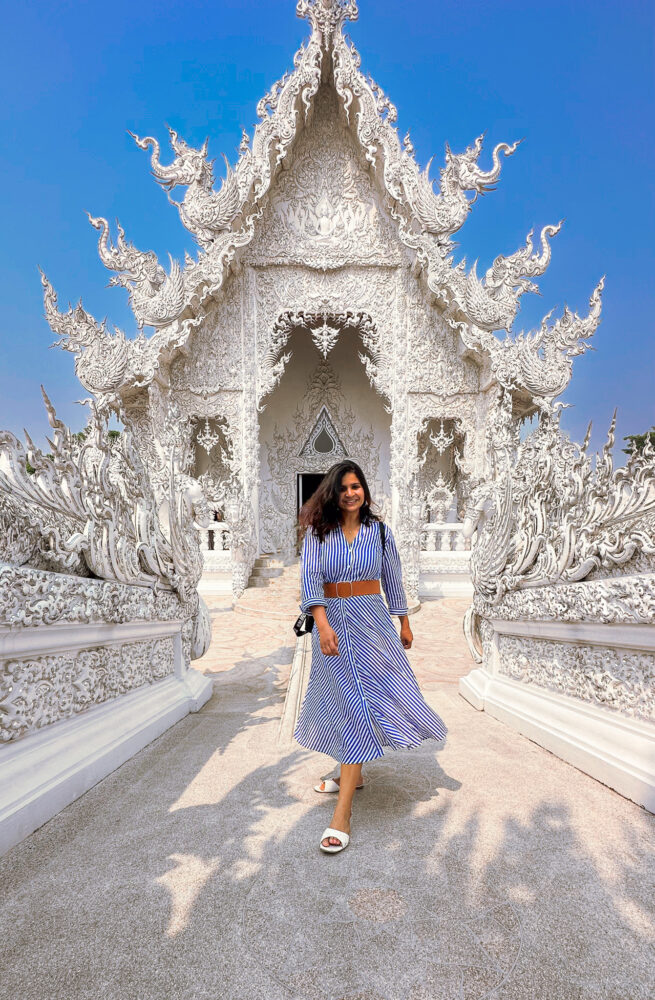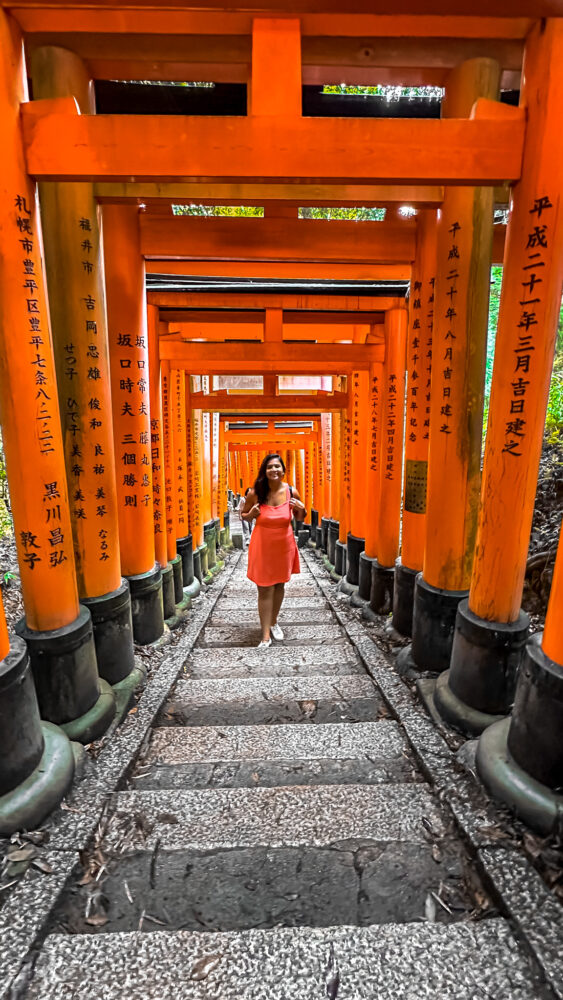10 must do things in Shinkansen
If you are visiting Japan, then no need to worry as in every corner there is a street to explore from Tokyo to Kyoto to much more. But Shibuya is a very vibrant neighborhood which no one would like to miss on as it has it all adventure spots, Exploration of unique attractions, food hogging and but obvious party and shopping spots. This is the place where people meet the most energetic side of Tokyo city. Shibuya Crossing, known for its appearances in movies such as Lost in Translation, Fast and Furious, and Resident Evil, has become synonymous with Tokyo for many. When you experience Shibuya Crossing, it feels like entering the world of a science fiction movie, characterized by its vivid colors and synchronized movement.
Shibuya skywalk with Shibuya scramble
A new banger landmark Shibuya scramble square in Shibuya opened up right above the Shibuya station in 2019, giving extensive options to shop, eat and sightseeing. This place has everything from Converse, Nike showroom to having Japanese cuisine to cool down the hunger. As you ascend from the basement’s second floor to the first, you’ll be immersed in a culinary haven featuring approximately 60 food-exclusive stores. Notably, Nihonbashi Tendon Kaneko Hannosuke offers its mouthwatering ebiten oshizushi sushi for your delight. On the first floor, the spotlight shines on Mori Yoshida Paris, marking its inaugural Japanese store, where the Mont Blanc dessert, adorned with an elegant cream drapery, beckons with exceptional taste.
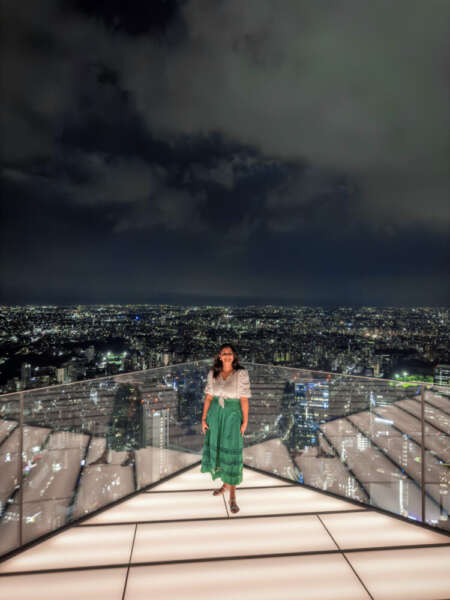
Venturing further upward, from the second to the ninth floor, trendy fashion boutiques showcase the latest style trends. The sixth floor dedicates itself to cosmetics, boasting an extensive array of Japanese brands such as ALBION, SUQQU, FANCL, SHISEIDO, and RMK. Moving on, the seventh and eighth floors introduce you to fashion labels beloved by locals, while the tenth floor is home to the all-encompassing lifestyle store Tokyu Hands, replete with charming miscellaneous goods and daily necessities. For tea connoisseurs, ITOEN, renowned for its bottled teas, graces this floor with Ocha room ashita ITOEN. Here, you can explore a diverse selection of Japanese teas, including matcha and fruit-infused varieties, complemented by a delectable assortment of food and desserts designed to accompany your chosen beverage.
Later comes jaw dropping view from the 230 ft above the bustling and busiest pedestrian crossing in the city of Japan is a major tourist attraction known as Shibuya skywalk from 14th to 46th floor. Stepping onto the ascending escalator will make all the hush-push around you disappear as soon as you start reaching the top and it will provide a beautiful view of the whole lot of Tokyo with 360% view of the city including prominent view of all touristy attractions, like Tokyo tower, Tokyo skytree and Mont Fuji on some clear days. It turns out even more beautiful when the sky shows out its vibrant tone at the time of the sunset. Well this place opened in 2019 with a tag of only tallest building in Shibuya named as Shibuya scramble square but before the borders were closed in march 2020 due to covid, this place was already an ultimatum. The highest vantage point of this place is it has summertime only rooftop bar in the area.
Hachiko statue
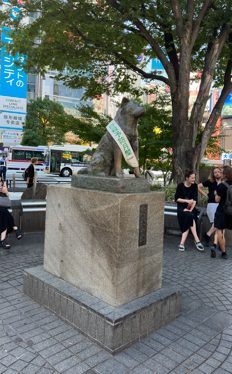
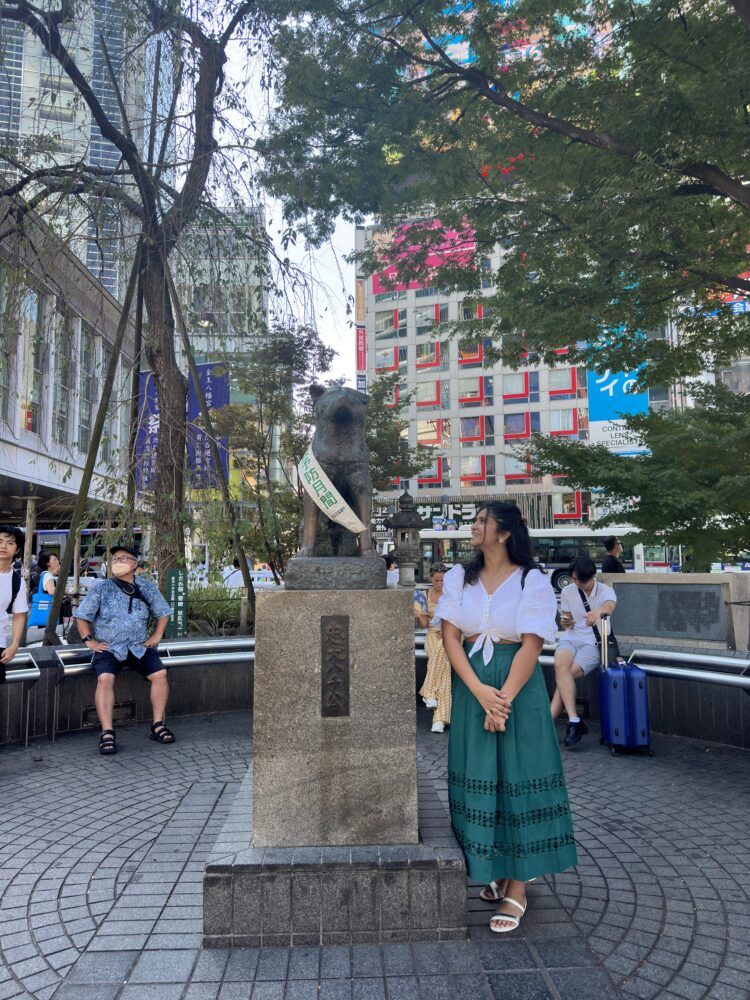
The Hachiko statue is an unofficial landmark of Japan but a very famous meeting point nowadays. Hachiko statue near Shibuya station is a homage to the loyal Akita dog who used to visit and wait for his master everyday even after his death to pay respect. Professor Eizaburo Ueno of Tokyo University adopted a loyal dog in the Akita breed in the 1920’s. They soon became inseparable. Hachiko used to walk his owner at the Shibuya station when the professor would head off to work and this pup used to return back till 3pm at the same station to greet Ueno (the owner). Unfortunately, the owner died in 1925 in the university itself. This didnt give owner and hachiko a chance to reunite and say final goodbye. However, the faithful dog didnt stop visiting the station, he used to visit there everyday on his own until his death after 10 years. His death made so many headlines but he was cremated and buried right next to his dearest owner. This story became so legendary and heart touching that a small statue was erected in front of the Shibuya station in memory of Hachiko. This is a starting point for every tourist who visits Tokyo or a convenient meeting point for friends. Foreigners here are always queuing to click photo with that statue which is just a few minutes away from the famous Shibuya scramble.
Hachiko’s body was cremated, but his fur was carefully preserved. Subsequently, his fur was used to create a stuffed representation of him, which is now on exhibit at the National Museum of Nature and Science in Tokyo’s Ueno Park. Additionally, in honor of the 20th anniversary of its relocation, a second statue was erected in front of Tower Records in Shibuya to commemorate Hachiko’s legacy.
Shibuya crossing
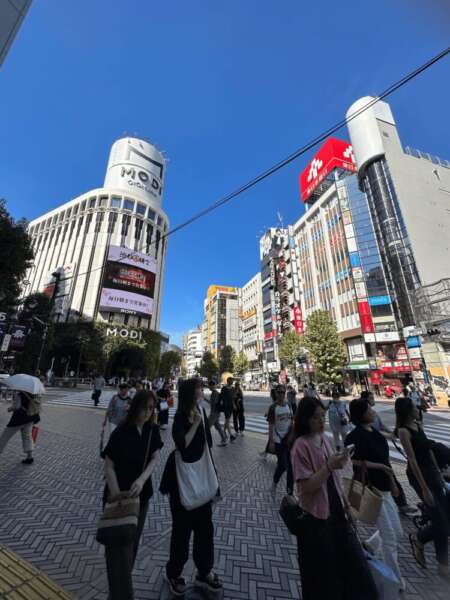 Shibuya crossing, which is the worlds busiest pedestrian street in the whole world.
Shibuya crossing, which is the worlds busiest pedestrian street in the whole world.
Shibuya Crossing stands as one of Tokyo’s most iconic landmarks, capturing the spotlight in numerous films, magazines, and blogs. During its busiest periods, an estimated 1,000 to 2,500 individuals navigate their way across this junction every two minutes, a volume large enough to swiftly fill a football stadium. This remarkable spectacle has earned it the affectionate nickname “scramble,” reflecting the diverse flow of pedestrians converging from all directions. Shibuya Crossing perfectly balances on the fine line between frenzied chaos and impeccable synchronization. When you embark on your Tokyo adventures, a visit to this bustling intersection is inevitable, providing you with the opportunity to traverse it while also indulging in Shibuya’s abundant offerings of shopping, dining, and entertainment.
Although Shibuya Station first opened its doors in 1885, the iconic crossing we know today only assumed its modern shape in 1932. This transformation coincided with the introduction of the Tokyu Tokyo Line, establishing Shibuya as a pivotal stop connecting the bustling port city of Yokohama with Tokyo’s central business district. With the continuous expansion of railway lines serving the station and the ever-growing influx of residents and workers into Tokyo, the area experienced rapid development. Presently, Shibuya boasts connections to nine major railway lines, an extensive network of bus routes, and houses a multitude of shopping and commercial complexes.
Meiji Jingu
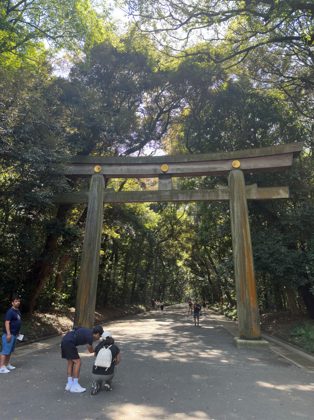 Nestled in the technologically advanced city of Tokyo, Meiji Jingu is just a short stroll away from the eccentric streets of Harajuku. This renowned Shinto shrine remains veiled within a densely wooded enclave, casting an aura of serenity amidst the vibrant pulse of Japan’s bustling metropolis. Meiji Jingu stands as one of Tokyo’s most frequented shrines, drawing millions of visitors annually. With its daily rituals, remarkable architectural marvels, and picturesque surroundings, it stands as a captivating and revitalizing attraction, appealing to both tourists and practitioners of the Shinto faith.
Nestled in the technologically advanced city of Tokyo, Meiji Jingu is just a short stroll away from the eccentric streets of Harajuku. This renowned Shinto shrine remains veiled within a densely wooded enclave, casting an aura of serenity amidst the vibrant pulse of Japan’s bustling metropolis. Meiji Jingu stands as one of Tokyo’s most frequented shrines, drawing millions of visitors annually. With its daily rituals, remarkable architectural marvels, and picturesque surroundings, it stands as a captivating and revitalizing attraction, appealing to both tourists and practitioners of the Shinto faith.
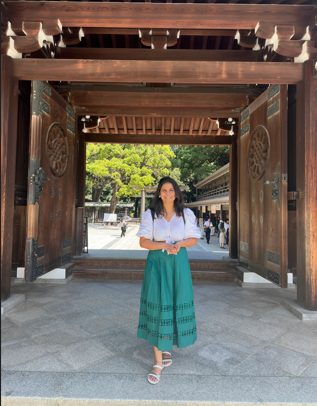
Constructed in 1920, the relatively recent Meiji Jingu shrine serves as a commemoration of Emperor Meiji and Empress Shoken, Japan’s first modern imperial couple. Emperor Meiji’s accession to the throne in 1867 marked the conclusion of Japan’s feudal era and the dawn of the Meiji Period. Tragically, the shrine fell victim to bombings in 1945, but thanks to public contributions, it was swiftly reconstructed in 1958. Situated conveniently in Tokyo, this easily accessible shrine is a popular destination for visitors, welcoming them daily from sunrise to sunset without an admission fee. It features one southern entrance and two northern entrances, all distinguished by towering torii gates. As visitors pass beneath these gates, symbolizing the transition from the secular to the sacred realm, it is customary to bow in respect. The path leading to the shrine’s main complex is enveloped by a verdant forest comprising over 100,000 trees and a diverse array of plant species, many of which were donated from various regions across Japan.
Cat street
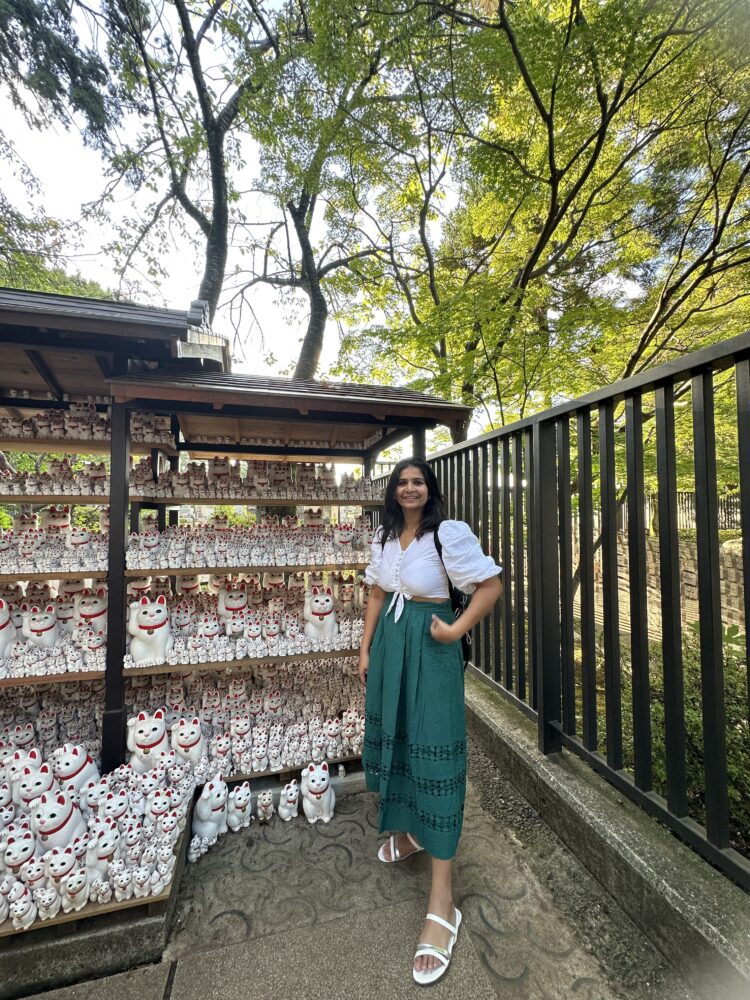
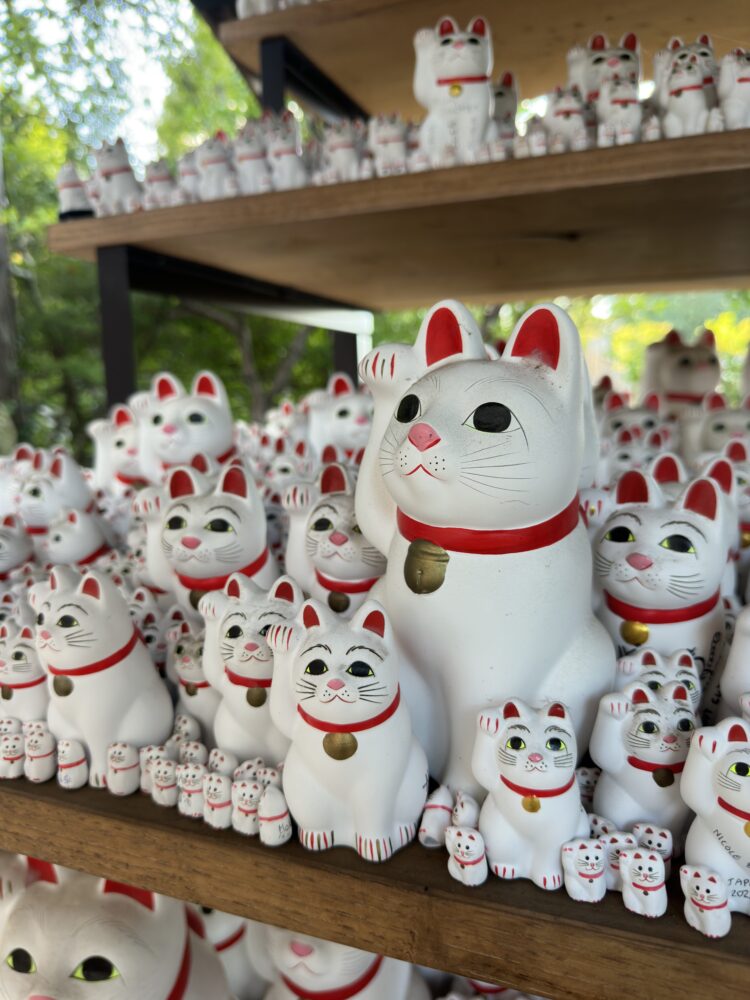
The moniker “Cat Street” might sound somewhat deceptive, but it’s surprisingly fitting for the Ura-Harajuku shopping street. Various theories attempt to explain its origin, including one involving a legendary black cat that once roamed its lanes and another suggesting the street’s shape resembles a cats tail. What’s undeniable is that the shops here possess cat-like individuality and charm, each showcasing its distinct personality. While Western and street culture trends dominate, you’ll also find a diverse array of styles, ranging from the delicate and lacy to natural zakka, punk rock, and artsy expressions. Merchandise here generally falls within the mid to high price range, with hidden gems waiting to be unearthed through a bit of exploration. Thrift stores and second-hand shops offer a treasure trove of clothing items, making them an essential stop for fashion enthusiasts. Additionally, well-known brand boutiques have started making their presence felt, creating a delightful blend of options for travelers to explore
Yoyogi Park
Yoyogi park is one of the largest city parks in Tokyo located in the Shibuya area. It features wide lawns, ponds, forested area and even an area for jogging, picnicking with friends and family and outdoor activities as well. Although Yoyogi park has a few cherry trees compared to the other location in Tokyo, making it a better Hanami place in spring. This place is also known for its Ginkgo trees forest which turns into intensely golden in color in the autumn season. Well before becoming a city park in 1967, it was a site for the Olympic village for the Tokyo Olympics in the year 1964 and before this it was a residential area for US military personnel. Yoyogi Park, one of Tokyo’s largest green spaces, offers expansive lawns perfect for picnics and hosts several beautiful bodies of water. Situated in close proximity to popular Harajuku attractions like Takeshita Street and Meiji-jingu Shrine, it provides easy access to these hotspots. The park is so close to many stations, the quickest way to reach here at Yoyogi park is though Harajuku Stations on the JR Yamanote Line, Yoyogi-Koen Station on the Tokyo Metro Chiyoda Line, or Meiji-Jingumae Station on the Tokyo Metro Fukutoshin Line.
Centre Gai
Center Gai, located in Shibuya, serves as the primary shopping street in the area. This pedestrian walkway is renowned for its association with Shibuya Girls and its role as a breeding ground for emerging fashion trends. During regular hours, Center Gai bustles with activity, drawing in a diverse crowd that includes shoppers, tourists, students, and a range of intriguing characters often found on the fringes of societal norms.
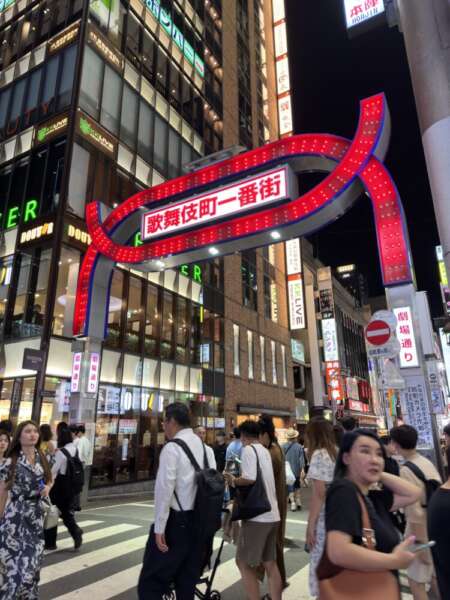 The main street and its adjoining side streets in Center Gai are adorned with an array of diverse shops, including eateries, bars, clubs, coffee houses, boutiques, and gaming centers. The competitive landscape in this area ensures that both food and shopping options are of high quality, presenting a wide variety for patrons to choose from. Center Gai boasts an abundance of sweet shops, ice cream parlors, and crepe vendors catering primarily to the younger crowd. While it remains a hotspot for teenagers and those in their early twenties, it also welcomes visitors from older age groups. As you step into Center Gai from the bustling Shibuya Crossing, be prepared for a sensory overload of sights and sounds.
The main street and its adjoining side streets in Center Gai are adorned with an array of diverse shops, including eateries, bars, clubs, coffee houses, boutiques, and gaming centers. The competitive landscape in this area ensures that both food and shopping options are of high quality, presenting a wide variety for patrons to choose from. Center Gai boasts an abundance of sweet shops, ice cream parlors, and crepe vendors catering primarily to the younger crowd. While it remains a hotspot for teenagers and those in their early twenties, it also welcomes visitors from older age groups. As you step into Center Gai from the bustling Shibuya Crossing, be prepared for a sensory overload of sights and sounds.
Street Karting in Shibuya
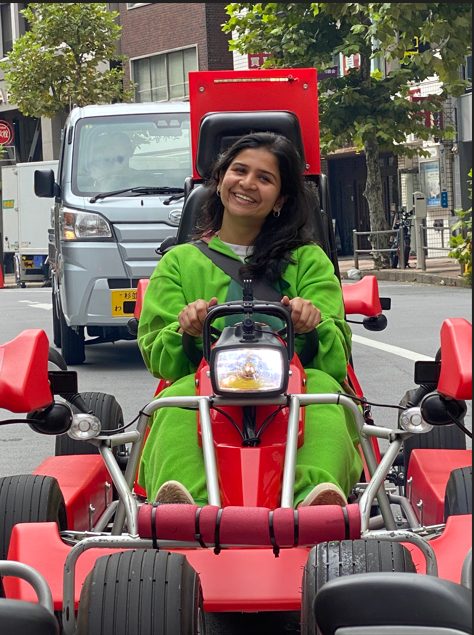
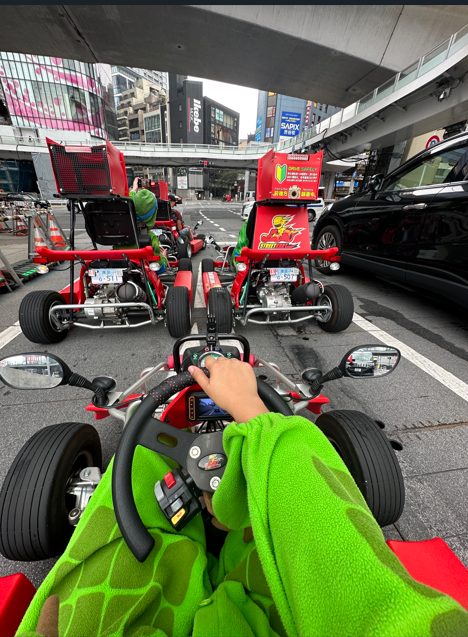
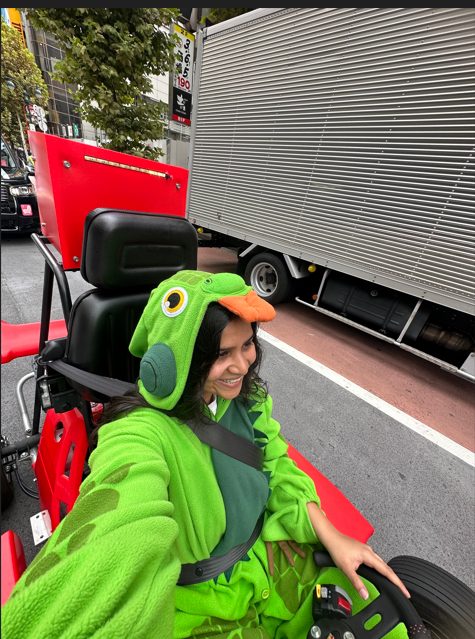
This Go-Kart company stands out as the sole one offering multiple passes through the renowned Shibuya Crossing during their tours. Prepare to revel in the spotlight, as every passerby will undoubtedly notice you, offering smiles, waves, and photo opportunities. While Shibuya, Harajuku, and Omotesando are in close proximity, each possesses a distinct character and a unique narrative. The diverse array of stores and fashion in these areas will capture your attention. Knowledgeable guides will ensure a safe and entertaining journey for you. Embark on an extraordinary day filled with costume-play, exhilarating drives, awe-inspiring vistas, celebrity-like attention from onlookers, and photographic evidence to substantiate that it was all genuine. Please keep in mind that the meetup time is set 15 minutes prior to the departure time. Failure to arrive at the shop by this time will result in your inability to participate, with no refund provided.
Nezu Museum
Nezu Museum accommodate an extensive and impressive collection of pre-modern Japanese and East Asian arts. Kaichiro Nezu, a politician and a business man who is a voracious collector of art who hoped to showcase this collection to the public, a mission later led by the museum and foundation. Pieces like carved stone Buddha, classic calligraphy, ceramic pieces and some paper art. This gallery is well curated with variety that brings tourists some competitive attention. Arrangement of artworks are done thoughtfully and with attention to detail to create an engaging and dynamic experience for visitors. This museum has more than 7000 pieces of arts, 7 national treasures designated by the Japanese government. In one of its six galleries, the museum showcases Japanese tea ceremony utensils in a manner that enables visitors to observe the evolution of the art associated with this cultural heritage throughout history. The museum, designed with a modernist aesthetic, seamlessly blends the traditional wooden construction’s lines and angles with contemporary materials, resulting in a space that is bathed in natural light. Adjacent to the bustling Omotesando area, the Nezu cafe offers a tranquil view of the expansive 17,000-square-meter gardens.
Takeshita Street
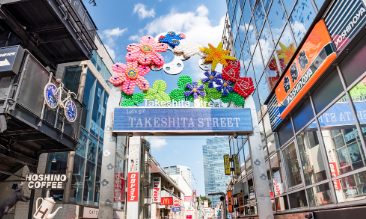
Takeshita street in 90’s was a place for counterfeit product from Japanese and American brands. So, till date this place has been so fashion trendy and colorful. In fact, all the guide books in Japan have this place, as not being in the heart of the city but also is the heart of all the trendy and weirdest things available. There are so many small brands chained stores and individual shops available in this area. Within these 400 meters, a wide array of choices is available. As a result, numerous smaller shops frequently serve as testing grounds for emerging trends, making it a place where you can often discover these trends before they become widely popular. If diversity adds excitement to life, Takeshita Street is undeniably a source of excitement! You can find shops entirely devoted to gachapon (capsule toys), unique accessories, quirky popcorn handbags, and shoes that appear challenging to walk in. Moreover, there are some delightful small stores that warmly welcome browsers, so don’t hesitate to explore them, even if they seem exceptionally fashionable or trendy at first glance.

